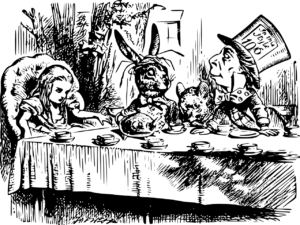Not that Kind of Committee Meeting: Tales of Faculty Mentoring
 Now that you have assembled your faculty mentoring committee, it is time to prepare for your meeting. A week before the meeting, I send out an updated CV and any documents that I want reviewed, like grant pink sheets or a manuscript draft. I also include an extensive document detailing my activities since I started my faculty appointment. As always these days, n=me.
Now that you have assembled your faculty mentoring committee, it is time to prepare for your meeting. A week before the meeting, I send out an updated CV and any documents that I want reviewed, like grant pink sheets or a manuscript draft. I also include an extensive document detailing my activities since I started my faculty appointment. As always these days, n=me.
What to cover in your meeting: My secondary department, where faculty mentoring committees are required for all junior faculty, has a fairly thorough document that my meeting is structured around. Topics of conversation we cover, and you should consider, include:
Committee concerns from the last meeting: This is a laundry list of questions, comments, and concerns raised in the last committee meeting.
Grants: Outline your pending, current, unfunded, and planned grants. I include as much detail as possible here, including my role on the grant, total directs into the lab, percent effort for myself and lab members, and the dates the grant spans. I also include details of my start-up, specifically how much is left, when it expires, and how I intend to spend the money (supplies, personnel, etc.). This gives me a good idea of where I stand financially and lets my committee assess if I am planning appropriately for the lab.
Manuscripts: Provide the title and author block of your senior author manuscripts in outline, draft, or published form. So far, I only have outlines of manuscripts and target journals, but this information has been useful for my committee to evaluate if my research is a good fit for the journal, if I am aiming too high, and my progress on submitting the manuscript.
Laboratory status: Detail your equipment, staff, and trainees both acquired and pending. In my meeting, part of this conversation included how to select graduate students.
Teaching activities: List all your teaching activities. My mentoring committee gently reminded me that although my departmental teaching is appropriate, I will need to teach some medical school lectures as well.
Collaborations: Identify all internal and external collaborations. The important things to list include the goals of the project, whether it is funded, and your role on the project. A good balance of principal investigator (PI) and co-investigator (Co-I) collaborations is appropriate, particularly with more seasoned investigators who likely have more mature data for grant applications and manuscripts. My committee was mostly satisfied, but they did have concerns about budgeting in my Co-I grants, where my expenditures were large and we did not include a subcontract. Lesson learned.
Internal and external presentations (poster, podium, lecture, etc.): List all the presentations you have given, both internal and external to your institution. Thus far, my talks have largely been internal, although I am starting to use my network to give external talks.
Internal and external committees: List every committee you serve on in the department, the institution, and at the national level. It is important that your committee sees an accurate representation of the amount of service you perform, so tracking hours spent on these tasks, and including them in your report, is wise. This is particularly important for women, who tend to do more service than their male colleagues. Your faculty mentoring committee is there to tell you if you are doing too much, so give them the data they need. Tracking hours may also be part of your faculty activities form. At my institution, my annual faculty activity form requires approximate numbers of hours spent doing each service task, so I should be logging the time anyway.
Challenges impacting your success: This is the most challenging part of the meeting. Identify your shortcomings in the past six months in teaching, service, and/or research and identify what is prohibiting you from accomplishing your goals. In my case, it has been too little personnel and too much science. Consequently, we spent quite a bit of time discussing strategies for recruiting graduate students and postdocs to the research group.
Committee concerns: This final point lets the committee re-affirm what their concerns are and what progress they believe needs to be made in the next 6 months.
What to do after the meeting: After my meetings, I collect all of the notes, and type them up for the committee. I send them out and make adjustments based on any feedback I get. I also add these to the next meeting’s document, so my mentor’s remember what we talked about, what concerns they raised, and if I have made progress in addressing them.
So far, these meetings have been incredibly helpful. For example, I now know that teaching and service need to be completed at departmental, medical school, and national levels. My mentoring committee has also course-corrected some smaller concerns as well, like suggesting a series of smaller papers instead of one massive manuscript. The most valuable part of these meetings, however, has been my committee telling me how I am doing. There is nothing sweeter than hearing “you are on track” from a room of individuals who have navigated the promotion and tenure process at your institution. Stay tuned for more tales!
Did I miss an important point? Do you have questions or concerns about the post? Or perhaps an anecdote to contribute! Feel free to send some electrons my way in the comments, via Twitter @PipetteProtag, or through traditional electronic mail pipette.protagonist@gmail.com






1 Comment
Would you change any of this for a research advisory committee (convened under the auspices of a career development award, and distinct from a faculty advisory council)? I am striving to harmonize and have a single committee to cover both but haven’t gotten there yet.